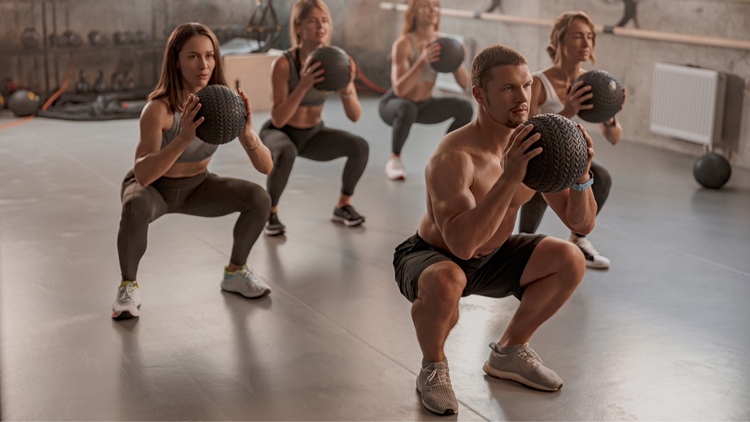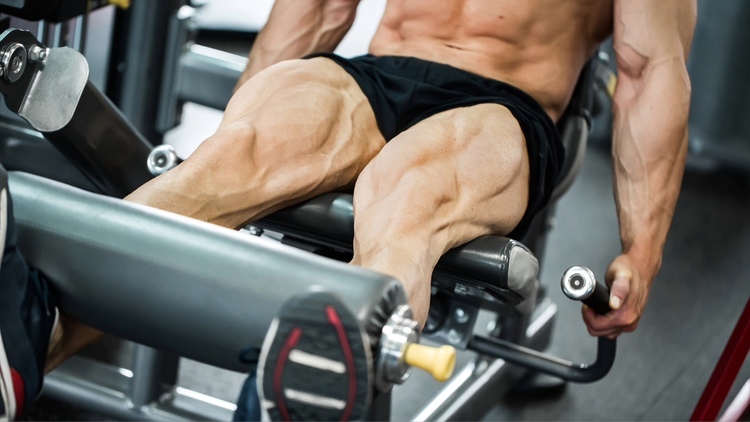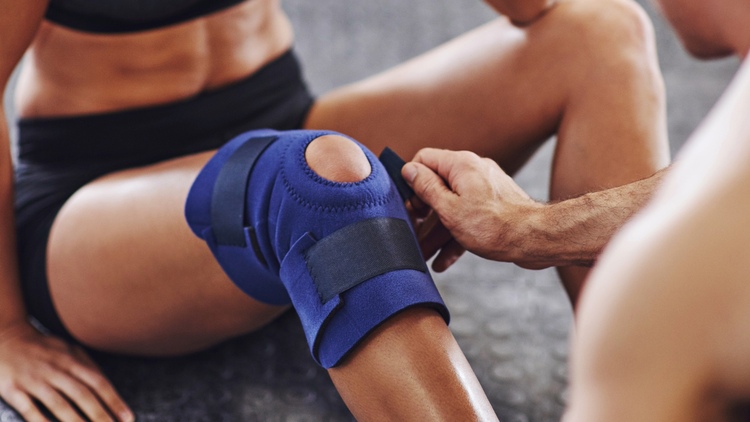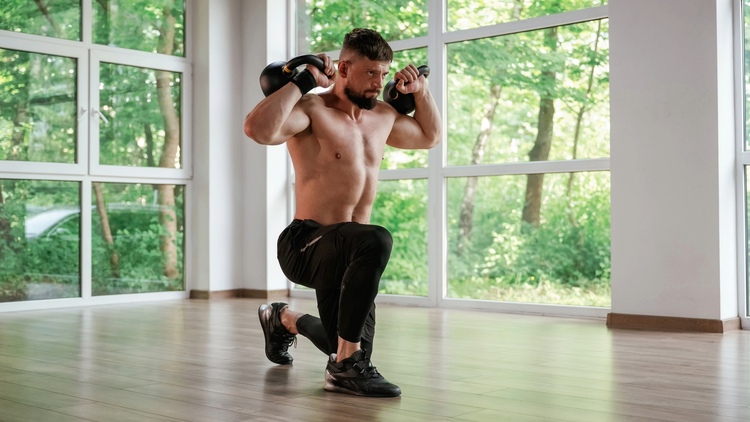Welcome



Leg day is often a make-or-break moment in any fitness routine, where dedication meets results. Among the various exercises that promise to sculpt those powerful lower limbs, the leg press stands out as a fundamental powerhouse. It’s not just about building strength; it’s about enhancing overall athletic performance and fostering muscular balance. Unlike squats, which can sometimes strain the back, the leg press provides a controlled range of motion, making it accessible for individuals at any fitness level.
By incorporating leg presses into your leg day routine, you’ll not only develop impressive quads, hamstrings, and glutes but also improve your joint stability and overall leg strength. Let’s delve into the transformative power of leg presses.
When you perform leg presses, you engage multiple muscle groups in your lower body, making it a highly effective compound exercise. The primary muscles targeted during the leg press are the quadriceps, which are located on the front of the thigh. These muscles are responsible for extending the knee and play a crucial role in many daily activities and athletic movements.
In addition to the quadriceps, the leg press also significantly engages the hamstrings and glutes. The hamstrings, located on the back of the thigh, are involved in knee flexion and hip extension. The glutes, or buttock muscles, are key players in hip extension and stabilization. By working these muscle groups together, the leg press helps to create a balanced and powerful lower body.
The calf muscles, specifically the gastrocnemius and soleus, also get activated during the leg press. These muscles are essential for plantar flexion, which is the movement that allows you to push off the ground with your toes. Engaging the calves during the leg press can contribute to overall lower leg strength and stability. The comprehensive engagement of these muscle groups makes the leg press an invaluable addition to any leg day routine.

Both leg presses and squats are fundamental exercises for building lower body strength, but they offer distinct benefits and can complement each other in a well-rounded workout regimen. Squats are a free-weight exercise that requires significant core engagement and balance, making them excellent for enhancing overall functional strength and coordination. However, they can be challenging for individuals with limited mobility or those recovering from injuries.
Leg presses, on the other hand, provide a more controlled environment, allowing you to focus on isolating and strengthening specific muscle groups without the added strain on the back and joints. This makes them particularly beneficial for those who may struggle with the mechanics of squats or who need to avoid excessive spinal loading. The leg press machine supports your body, reducing the risk of injury and allowing you to safely increase the weight load as you build strength.
Incorporating both exercises into your routine can offer a balanced approach to lower body training. Squats can help improve overall functional strength and athletic performance, while leg presses can enhance muscle endurance and hypertrophy. By alternating between these exercises, you can target different aspects of lower body development, ensuring comprehensive strength and muscle growth.
One of the standout features of the leg press is its accessibility, making it an excellent choice for both beginners and seasoned athletes. For those new to strength training, the leg press offers a straightforward and user-friendly introduction to lower body exercises. The machine provides guided movement, which helps beginners maintain proper form and reduces the risk of injury. Additionally, the adjustable weight load allows beginners to start with lighter weights and gradually increase resistance as they build confidence and strength.
For more experienced lifters, the leg press remains a valuable tool for targeting specific muscle groups and achieving advanced training goals. By varying the foot placement on the platform, advanced users can emphasize different muscles, such as the inner thighs, outer thighs, or glutes. This versatility enables seasoned athletes to address muscle imbalances and enhance overall leg development. Furthermore, the ability to safely handle heavier weights on the leg press can contribute to significant strength gains and muscle hypertrophy.
Regardless of your fitness level, the leg press can be tailored to meet your needs and help you achieve your goals. Its adaptability, combined with the controlled motion it offers, makes it a versatile and effective component of any lower body workout routine. Whether you're just starting or looking to take your leg training to the next level, the leg press has something to offer.
One of the primary advantages of the leg press is its ability to provide a joint-friendly workout, reducing the risk of injury while still delivering significant strength gains. Unlike free weight exercises such as squats, where maintaining balance and proper form can be challenging, the leg press machine offers a stable and controlled environment. This stability helps to minimize the strain on the knees, hips, and lower back, making it a safer option for individuals with joint concerns or those recovering from injuries.
The design of the leg press machine allows for a natural range of motion that aligns with the body's biomechanics. This alignment reduces undue stress on the joints and promotes proper movement patterns. Additionally, the backrest and padded seat provide support, helping to maintain a neutral spine position and preventing excessive spinal loading. This support is particularly beneficial for individuals with lower back issues, as it allows them to perform the exercise without aggravating their condition.
By incorporating leg presses into your routine, you can enjoy the benefits of lower body strength training without compromising joint health. The controlled and supported nature of the exercise makes it an ideal choice for those looking to build muscle and enhance performance while minimizing the risk of injury. Whether you're managing a pre-existing condition or simply want to protect your joints, the leg press offers a safe and effective solution.

To maximize muscle growth with leg presses, it's essential to focus on several key factors: progressive overload, proper form, and variation in your training routine. Progressive overload involves gradually increasing the weight load or the number of repetitions over time, challenging your muscles to adapt and grow stronger. By consistently pushing your limits, you can stimulate muscle hypertrophy and achieve significant gains in size and strength.
Proper form is crucial for ensuring that you effectively target the intended muscle groups and reduce the risk of injury. When performing leg presses, keep your feet shoulder-width apart and ensure that your knees are aligned with your toes. Lower the platform in a controlled manner, avoiding locking your knees at the top of the movement. Engaging your core throughout the exercise can also help maintain stability and protect your lower back.
Incorporating variations into your leg press routine can further enhance muscle growth and prevent plateaus. Changing your foot placement can shift the emphasis to different muscles, such as the inner thighs, outer thighs, or glutes. Additionally, experimenting with different rep ranges and training techniques, such as drop sets or tempo variations, can provide new stimuli for muscle adaptation. By keeping your workouts diverse and challenging, you can continue to make progress and achieve your muscle growth goals.
While the leg press is a relatively straightforward exercise, there are several common mistakes that can hinder your progress and increase the risk of injury.
One of the most frequent errors is placing the feet too high or too low on the platform. Incorrect foot placement can lead to improper alignment of the knees and hips, resulting in unnecessary strain on the joints. To avoid this, ensure that your feet are positioned shoulder-width apart and that your knees track in line with your toes throughout the movement.
Another common mistake is using excessive weight, which can compromise form and increase the risk of injury. It's essential to prioritize proper technique over heavy loads. Start with a manageable weight and gradually increase the resistance as you build strength. Additionally, avoid locking your knees at the top of the movement, as this can place undue stress on the knee joints and reduce the effectiveness of the exercise.
Rushing through the movement is another pitfall to avoid. Performing leg presses with controlled and deliberate motions ensures that you engage the intended muscle groups effectively and reduce the risk of injury. Take the time to lower the platform slowly and push back up with a steady and controlled effort. This approach not only enhances muscle activation but also promotes better overall form and safety.

Maintaining proper form during leg presses is essential for protecting your knees and back while maximizing the effectiveness of the exercise.
To start, position yourself comfortably on the leg press machine with your back firmly against the backrest and your feet shoulder-width apart on the platform. Ensure that your knees are aligned with your toes and that your hips are positioned neutrally. This setup will help you maintain proper alignment throughout the movement.
As you perform the leg press, focus on a controlled and smooth motion. Lower the platform slowly, bending your knees to a 90-degree angle or slightly less, depending on your flexibility and comfort. Avoid allowing your knees to collapse inward or outward, as this can place undue stress on the joints. Instead, keep your knees tracking in line with your toes to ensure proper alignment and muscle engagement.
When pushing the platform back up, avoid locking your knees at the top of the movement. Locking the knees can transfer the load from the muscles to the joints, increasing the risk of injury. Instead, maintain a slight bend in your knees and engage your quadriceps, hamstrings, and glutes to complete the movement. Keeping your core engaged throughout the exercise can also help stabilize your spine and protect your lower back.
Integrating leg presses into your leg day split can enhance balanced development and ensure comprehensive lower body strength.
To start, consider your overall training goals and how leg presses can complement other exercises in your routine. For example, if your primary goal is to build muscle mass, you might incorporate leg presses alongside other compound movements such as squats and deadlifts. This combination can provide a well-rounded approach to lower body training.
When planning your leg day split, aim to include a variety of exercises that target different muscle groups and movement patterns. For example, you might start with a compound lift like squats to engage the entire lower body, followed by leg presses to isolate and intensify the work on your quadriceps, hamstrings, and glutes. Adding in exercises like lunges or step-ups can further enhance functional strength and balance.
To avoid overtraining and ensure adequate recovery, it's essential to manage the volume and intensity of your workouts. Incorporate rest days or lighter training sessions between intense leg workouts to allow your muscles to recover and grow. By thoughtfully integrating leg presses into your leg day split, you can achieve balanced muscle development and optimize your overall lower body strength.

Introducing leg press variations into your workout routine can keep your training sessions fresh and effective, preventing plateaus and promoting continuous progress.
One popular variation is the single-leg press, which involves performing the exercise with one leg at a time. This variation can help address muscle imbalances, enhance unilateral strength, and improve overall stability and coordination.
Another effective variation is the narrow stance leg press, where you place your feet closer together on the platform. This adjustment shifts the emphasis to the outer quadriceps, providing a targeted workout for this specific muscle group. Conversely, a wide stance leg press, with feet positioned further apart, can engage the inner thighs and glutes more intensely, offering a different challenge for your lower body.
Incorporating tempo variations can also add a new dimension to your leg press workouts. For example, you might try performing the leg press with a slow eccentric phase, where you take several seconds to lower the platform, followed by an explosive concentric phase as you push the platform back up. This technique can enhance muscle control, increase time under tension, and stimulate greater muscle growth.
To get the most from your leg press sessions, fueling your body with the right nutrients is just as important as the exercise itself. Strength training breaks down muscle fibers, and proper nutrition helps those muscles recover and grow stronger. Products like those from Revolution Nutrition can be a useful addition to your routine. Our protein powders support muscle repair, helping your legs recover faster and reduce soreness after intense leg press workouts. Additionally, our pre-workout formulas can provide an energy boost and enhance focus, making it easier to push through challenging sets.
For both beginners and advanced lifters, supplementing your training with quality nutrition can improve performance and speed up progress. Revolution Nutrition’s range is designed to fit different needs, whether it’s muscle growth, endurance, or recovery. Adding this kind of support can help you get stronger safely and consistently, making your leg press sessions more effective and helping you reach your fitness goals faster.
Leg presses are a powerful tool for building strong, balanced legs without putting extra strain on your back or joints. They offer a controlled way to work key muscles like quads, hamstrings, glutes, and calves, making them suitable for all fitness levels. By combining leg presses with proper form, varied techniques, and thoughtful workout planning, you can build strength and muscle safely.
Pairing your workouts with good nutrition and supplements can further enhance your results. Whether you're just starting or looking to level up your leg training, leg presses provide a reliable and effective foundation for lasting lower body strength.